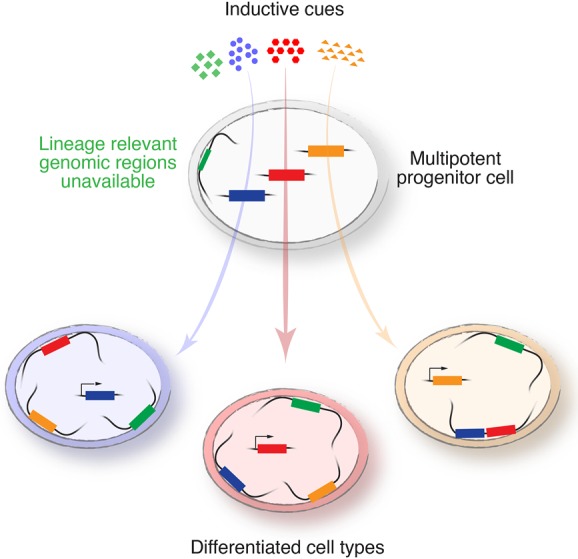Figure 1.

Proposed model of “chromatin competence.” We posit that spatial organization of the genome in three dimensions renders parts of the genome available for transcriptional activation, while other areas (e.g., those tethered to the nuclear lamina) are relatively less available. Inductive cues or morphogens can actively regulate only available regions of the genome in any given responding cell. Hence, high-order genome organization may regulate cellular competence; i.e., the ability of the cell to respond to a specific inductive cue. The combination of inductive cues and cellular competence shapes cellular identity.
